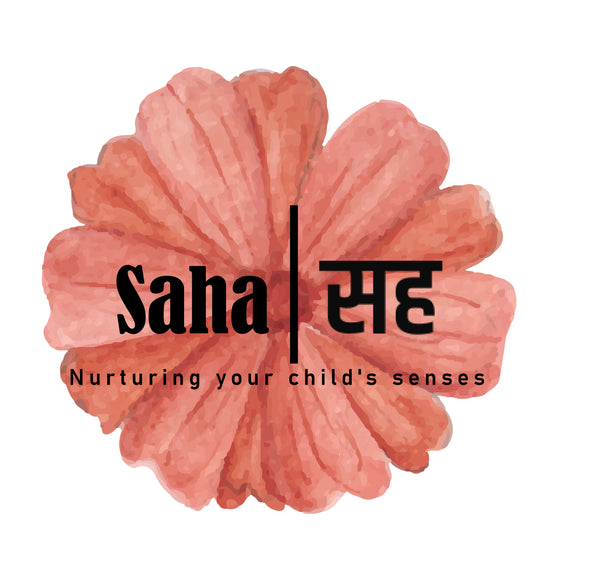
What is Early Childhood Development? Understanding the Foundation Years
Share
Early childhood development represents one of the most critical periods in human life—a time when the building blocks for lifelong learning, health, and behavior are established. Understanding this foundational stage is essential for parents, educators, and anyone involved in nurturing young minds.
Defining Early Childhood Development
Early childhood development (ECD) is a multifaceted concept that encompasses both the child and their environment. It refers to the period of rapid physical, psychological, and social growth that begins before birth and extends through approximately age 8. This period is characterized by extraordinary brain development, with 90% of a child's brain developing by age 5, making it the most important time in their lives.
The holistic nature of ECD focuses on skill development across four primary domains: physical (gross and fine motor), language, social/emotional, and cognitive. Children progress from being completely dependent on their caregivers to developing independence and the ability to attend to their basic needs.
The Critical Nature of Early Years
The first eight years are widely accepted as the most critical period a human being experiences. During these formative years, children's experiences and relationships help them form millions of brain connections that create pathways for lifelong behavior patterns. At no other time in human life does the brain form as many connections as it does in the first eight years.
This rapid brain development is primarily responsible for infants' ability to process visual, tactile, auditory, and olfactory information, as well as movement control and planning. The quality of early experiences significantly influences a child's future academic achievement, emotional well-being, and social competence.
The Five Key Areas of Development
Early childhood development occurs across five interconnected domains, each essential for comprehensive growth:
1. Physical Development
Physical development encompasses the growth and control of muscles, joints, and limbs, along with the development of fine and gross motor skills. Children gradually learn to control movement, achieve balance and coordination, and master dynamic skills like locomotion and agility. Providing adequate physical play experiences and opportunities for movement in early years enhances physical development and helps prevent health and behavioral issues.
2. Cognitive Development
Early childhood is the most intensive period of brain development in human life. Cognitive development refers to the growth of mental abilities, thinking processes, and problem-solving skills. Sensory skills and visual perception during early infancy help children quickly learn, perceive, process, and understand information from their surroundings.
3. Social and Emotional Development
This domain involves children's ability to interact with others and their environment, as well as their capacity for self-control and emotional regulation. Social and emotional development varies by age—from a baby's first smile to an older child's ability to share and play cooperatively with others.
4. Language and Communication Development
Communication begins from birth, with newborns using different cries to express various needs. Language development progresses from early consonant sounds at 2-3 months to the babbling phase in the second half of the first year. Children who vocalize more tend to develop stronger communication skills.
5. Ethical and Spiritual Development
This includes the development of values, sense of group membership, and identity within families, communities, cultures, and nation states. Ethical and spiritual development forms a subtle yet powerful aspect of early childhood growth. During the foundational years, children begin to absorb values, a sense of right and wrong, and spiritual awareness from their families and immediate surroundings. This process doesn’t just involve understanding rules - it’s rooted in modeling and experiencing compassion, honesty, respect, empathy, and responsibility in daily life.
Environmental Factors and Influences
Children's early development does not occur in a vacuum—the environment plays a crucial role in determining whether a child reaches their developmental potential. Key environmental factors include:
- Family context and social background
- Quality of early childhood education and care
- Nutrition and overall health
- Level of physical activity
- Community support systems
- Cultural context and lived experiences
The home, community, and learning environments are among the most important influences on young children's development. Supportive, nurturing, and stimulating environments, contexts, and conditions are essential for optimal development.
Developmental Milestones
Children develop according to recognized milestones, though each child progresses at their own pace. These milestones serve as useful markers for medical professionals and families to assess developmental progress. For example:
- 6 months: Rolling over, bringing objects to mouth, stranger anxiety, consonant babbling
- 12 months: Standing well, banging objects together, responding to simple commands
- 18 months: Walking alone, scribbling with crayons, saying several individual words
- 2 years: Standing on tiptoes, stacking blocks, playing with other children
- 3 years: Running easily, turning book pages, copying others
The Importance of Quality Care
Ensuring healthy child development from birth is a wise investment that results in improved child outcomes and long-term productivity. Children from disadvantaged backgrounds who lack access to quality early childhood support face significant challenges. Developmental differences between children who receive adequate care and those who don't can appear as early as nine months old, with impacts potentially lasting a lifetime.
Conclusion
Early childhood development represents a critical window of opportunity that shapes a person's entire life trajectory. By understanding the comprehensive nature of ECD—spanning physical, cognitive, social, emotional, and language domains—parents, educators, and communities can better support children during these foundational years. The investment in quality early childhood experiences pays dividends throughout a person's lifetime, making it one of the most important areas of focus for families and society.
At Saha, we recognize the profound importance of these early years and are committed to supporting families with thoughtfully designed products and resources that nurture holistic development during this precious time.
References
- Global, U. (n.d.). Defining early childhood and early childhood development. The University of the West Indies. https://global.uwi.edu/ecdfs/defining-early-childhood-and-early-childhood-development
- Studyonline.ecu.edu.au. (2022, January 25). Early childhood development: What happens in the first eight years. Edith Cowan University. https://studyonline.ecu.edu.au/blog/early-childhood-development-what-happens-first-eight-years
- UNICEF India. (n.d.). What we do: Early childhood development. UNICEF. https://www.unicef.org/india/what-we-do/early-childhood-development
- Wikipedia contributors. (2014, April 27). Early childhood development. Wikipedia. https://en.wikipedia.org/wiki/Early_childhood_development
